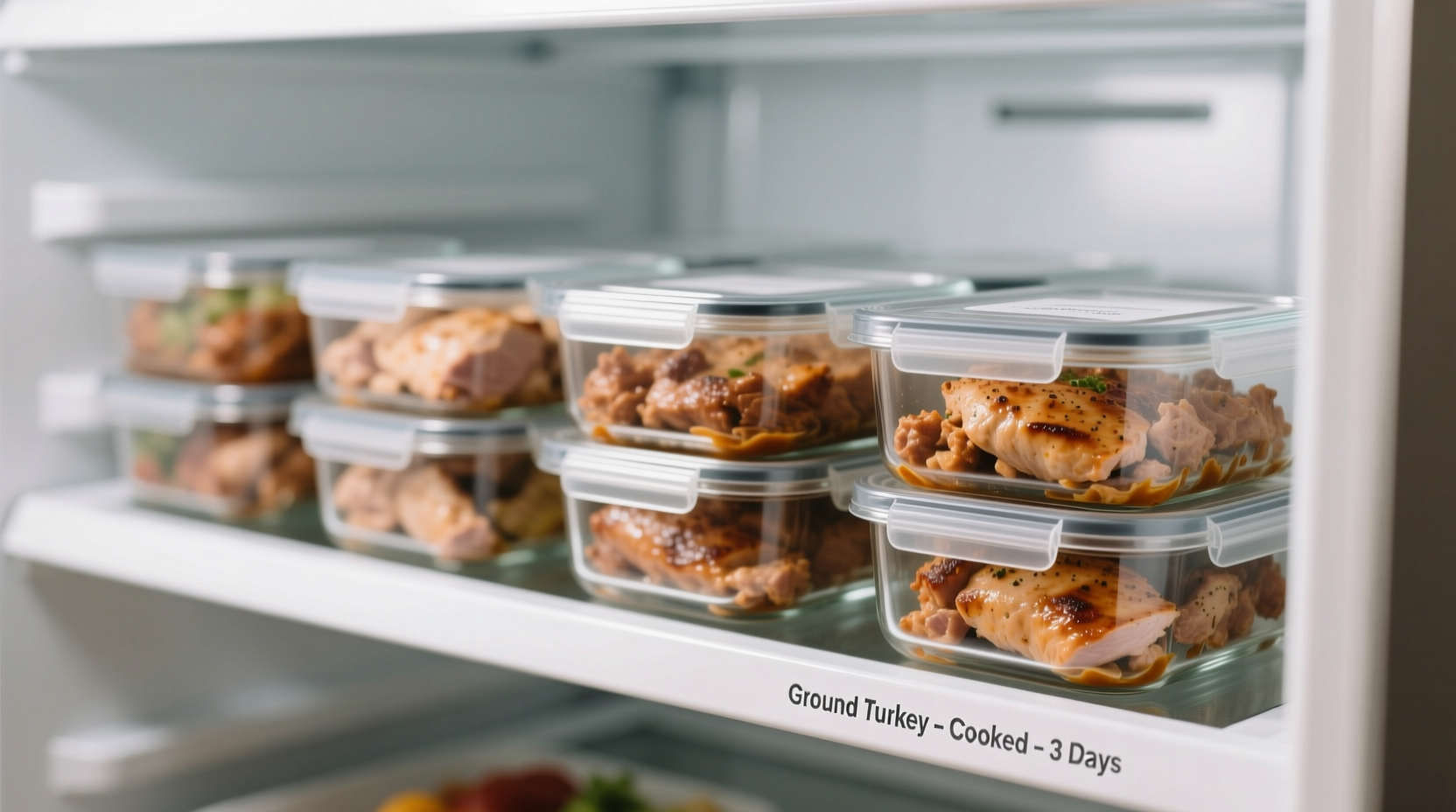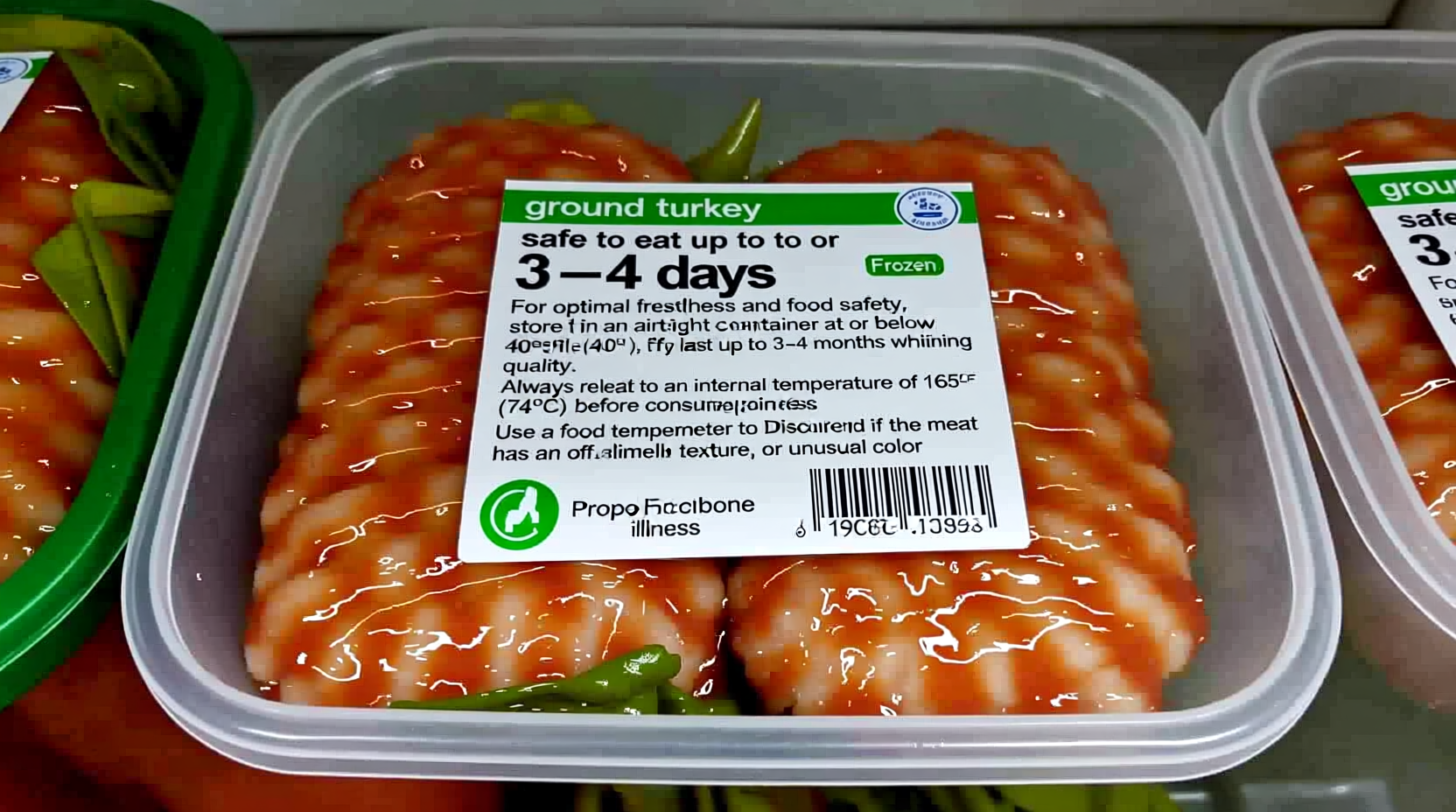Discover exactly how long your cooked ground turkey stays fresh and safe to eat, plus professional storage techniques that maximize both safety and flavor. Whether you're meal prepping for the week or have leftovers from dinner, this guide gives you the precise timelines and practical methods trusted by food safety experts.
Why Proper Cooked Turkey Storage Matters
Ground turkey has become a popular protein choice for health-conscious cooks, but its lean composition makes it particularly vulnerable to bacterial growth after cooking. Unlike whole cuts, ground meat has more surface area exposed to potential contaminants during processing. Understanding precise storage timelines prevents foodborne illness while reducing unnecessary food waste.
Food Safety Timeline: From Cooking to Consumption
Understanding the bacterial growth timeline helps explain why strict storage windows exist. When cooked ground turkey enters the temperature danger zone (40°F-140°F), bacteria can double every 20 minutes under ideal conditions. The USDA's Food Safety and Inspection Service has established clear guidelines based on extensive research into pathogen growth rates in cooked poultry.
| Storage Method | Maximum Safe Duration | Optimal Temperature | Quality Note |
|---|---|---|---|
| Refrigeration | 3-4 days | ≤40°F (4°C) | Best flavor and texture |
| Freezing | 2-6 months | 0°F (-18°C) | Use within 2 months for premium quality |
| Room Temperature | 2 hours max | 40-140°F (4-60°C) | Discard if left out longer |
Refrigeration: Maximizing Freshness and Safety
Proper refrigeration technique significantly impacts how long cooked ground turkey remains safe. Transfer leftovers to shallow, airtight containers within 2 hours of cooking to promote rapid cooling. The FDA Food Code specifies that food should not remain in the temperature danger zone for more than 2 cumulative hours. For households with older refrigerators, use an appliance thermometer to verify your unit maintains 40°F or below – many modern units run warmer than labeled.
When storing multiple containers, arrange them with space between each to allow proper air circulation. Never stack warm containers directly from the stove, as this creates a heat pocket that slows cooling. The USDA Food Safety and Inspection Service confirms that properly cooled cooked ground turkey maintains safety for 3-4 days under these conditions.

Freezing for Long-Term Storage
Freezing extends cooked ground turkey's shelf life while preserving nutritional value. For best results, portion leftovers into recipe-sized amounts before freezing. Vacuum sealing provides optimal protection against freezer burn, but heavy-duty freezer bags with air pressed out work well too. Always label containers with contents and date using freezer-safe markers.
When thawing frozen cooked ground turkey, never leave it at room temperature. The USDA recommends three safe methods: in the refrigerator (allow 24 hours), under cold running water, or in the microwave using the defrost setting. Cooked turkey thawed in the microwave or under water should be reheated immediately.
Recognizing Spoilage: Beyond the Clock
While timelines provide crucial guidance, always inspect leftovers before consuming. Discard cooked ground turkey showing any of these signs:
- Visual changes: Grayish-green discoloration, mold growth, or unusual slime
- Odor: Sour, ammonia-like, or rotten egg smells (even if within timeframe)
- Texture: Excessively sticky or slimy surface
When in doubt, throw it out. FoodSafety.gov emphasizes that pathogens like Salmonella and Clostridium perfringens often don't produce noticeable changes in food appearance or smell.
Situational Factors That Shorten Shelf Life
Certain conditions require reducing standard storage timelines. Cooked ground turkey mixed with high-moisture ingredients (like sauces or vegetables) may only last 2-3 days refrigerated. Leftovers from buffet-style meals where food sat out longer than recommended should be discarded after 1-2 days. If your refrigerator frequently runs above 40°F during power fluctuations, consume within 48 hours.
Ground turkey cooked to lower temperatures (155°F instead of 165°F) has reduced safety margins. The CDC guidelines for cooking for groups recommend stricter timelines in these scenarios to prevent foodborne illness outbreaks.
Safe Reheating Practices
Proper reheating destroys potential bacteria that may have developed during storage. Always heat cooked ground turkey to 165°F internally, verified with a food thermometer. When reheating in a microwave, cover containers and stir halfway through for even heating. Add moisture (broth or water) to prevent drying out during reheating.
Never partially reheat leftovers with intention to finish later – this creates extended time in the danger zone. The FoodSafety.gov refrigerator thermometer guide confirms that proper reheating technique is as crucial as initial storage for food safety.
Comparing Storage Times Across Protein Types
Ground turkey's storage timeline differs from other proteins due to its lean composition and processing method. Understanding these variations helps prevent cross-contamination and ensures proper rotation of leftovers:
| Protein Type | Refrigerator (Days) | Freezer (Months) | Special Considerations |
|---|---|---|---|
| Cooked ground turkey | 3-4 | 2-6 | More perishable due to high surface area |
| Cooked ground beef | 3-4 | 4-6 | Higher fat content extends freezer life |
| Cooked chicken breast | 3-4 | 4-6 | Whole cuts last longer than ground |
| Cooked fish | 1-2 | 2-3 | Most perishable cooked protein |
Practical Meal Planning Applications
Smart storage transforms cooked ground turkey from potential waste into meal prep gold. Divide large batches into portion-sized containers immediately after cooking – perfect for quick tacos, pasta sauces, or casseroles later in the week. For freezing, consider flattening portions in bags to create uniform layers that thaw quickly.
When incorporating leftovers into new dishes, add cooked ground turkey during the final cooking stages to prevent overcooking. This approach maintains texture while ensuring food safety. Professional kitchens follow this "cook-chill-reheat" method to maximize both safety and quality in meal preparation.











 浙公网安备
33010002000092号
浙公网安备
33010002000092号 浙B2-20120091-4
浙B2-20120091-4